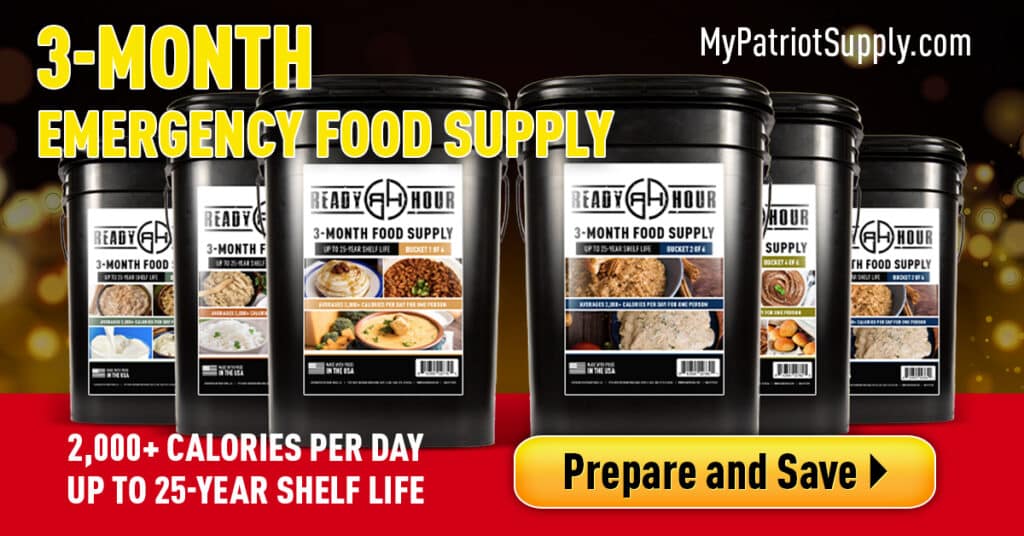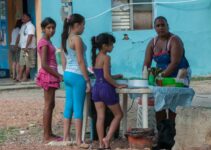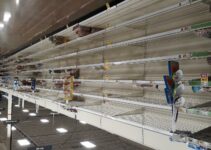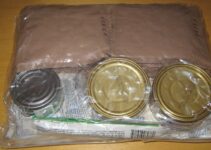| Item | Description |
|---|---|
| Multivitamins | To ensure you are getting proper nutrients during a disaster |
| Salt and Pepper | For seasoning your food |
| Cooking Oil | For cooking and adding flavor to food |
| Cereal and Granola | For a quick and easy breakfast option |
| Crackers | For a crunchy, non-perishable snack |
| Jerky | A high-protein, long-lasting snack option |
| Canned Soups | For a warm meal option |
| Instant Coffee/Tea | For a quick and easy caffeine boost |
| Comfort Foods | A few treats or comfort foods to boost morale |
| Special Dietary Needs | Foods that meet your specific dietary restrictions or allergies |
It is important to consider the specific needs of you and your family when preparing your emergency food supply. If you or someone in your family has special dietary needs or allergies, make sure to include items that meet those requirements. Additionally, including items like multivitamins, salt and pepper, and cooking oil can help ensure you are getting proper nutrients and making your emergency meals as flavorful as possible. Lastly, don't forget to include a few comfort foods or treats to boost morale during a stressful situation.
Are you prepared for a natural disaster? One of the most important things to have is an emergency food supply. Natural disasters can strike at any moment, leaving you without access to basic necessities like food and water. In this article, we will provide a comprehensive checklist of items to include in your emergency food supply for natural disasters.
The Importance of an Emergency Food Supply
During a natural disaster, it can be challenging to access food and water. Grocery stores may be closed or inaccessible due to damage caused by the disaster. Therefore, having an emergency food supply that can sustain you and your family for at least a few days is crucial.
An emergency food supply should include non-perishable items that can be stored for an extended period. These items should provide sufficient nutrition and calories to keep you and your family energized during a disaster.
Essential Items to Include in Your Emergency Food Supply
-
Water: The most crucial item to include in your emergency food supply is water. It is recommended to have at least one gallon of water per person per day. Store water in clean, airtight containers and replace it every six months.
-
Canned Foods: Canned foods are a great option for emergency food supplies as they have a long shelf life and do not require refrigeration. Some good options to consider include canned fruits, vegetables, and meats.
-
Dried Foods: Dried foods such as pasta, rice, and beans are also excellent options for emergency food supplies. They are lightweight, easy to store, and can be cooked with minimal equipment.
-
Energy Bars: Energy bars are a convenient option for emergency food supplies as they are high in calories and provide a quick source of energy. Look for bars that are high in protein and fiber.
-
Peanut Butter: Peanut butter is a good source of protein and healthy fats. It is also easy to store and does not require refrigeration.
-
Nuts and Seeds: Nuts and seeds are a good source of protein, healthy fats, and fiber. They are also lightweight and easy to store.
-
Powdered Milk: Powdered milk is a good source of calcium and protein. It can be reconstituted with water and used for cooking or drinking.
-
Baby Food: If you have young children, it is important to include baby food in your emergency food supply. Look for options that are high in nutrients and have a long shelf life.
-
Pet Food: If you have pets, it is important to include pet food in your emergency food supply. Make sure to store it in an airtight container and rotate it regularly.
Tips for Storing Your Emergency Food Supply
Once you have assembled your emergency food supply, it is crucial to store it properly to ensure it stays fresh and edible. Here are some tips to keep in mind:
-
Store food in a cool, dry place: Keep your emergency food supply in a cool, dry place away from direct sunlight.
-
Use airtight containers: Store food in airtight containers to prevent moisture and insects from getting in.
-
Rotate your supply: Regularly check the expiration dates of your emergency food supply and replace any items that have expired.
-
Include a manual can opener: Make sure to include a manual can opener in your emergency food supply in case you don't have access to electricity.
Nutritional Value and Preparation
It is essential to make sure that your emergency food supply includes items that provide sufficient nutrition and calories to keep you and your family energized during a disaster. Canned foods, dried foods, and energy bars are all excellent sources of nutrition. However, it's important to note that some canned foods can be high in sodium, so it's best to look for low-sodium options.
When preparing your emergency food supply, make sure to include items that are easy to cook without electricity or gas. Dried foods like pasta, rice, and beans can be cooked with minimal equipment. Additionally, make sure to include a portable stove or camping stove in your emergency kit, along with fuel.
Personal Experience: How Emergency Food Supply Saved My Family's Life During Hurricane Katrina
During Hurricane Katrina, my family and I were trapped in our home without power or access to food and water for several days. It was a terrifying experience, and we were forced to ration our supplies to make them last as long as possible. Fortunately, we had prepared an emergency food supply beforehand, which included non-perishable items like canned goods, dried fruits, and granola bars.
Our emergency food supply not only helped us survive the days without power, but it also gave us a sense of security and peace of mind during a chaotic situation. It allowed us to focus on other important tasks like staying safe and finding help without the added stress of hunger or thirst.
After the storm passed, we were without access to grocery stores for several weeks, but our emergency food supply sustained us until we could restock. It was a valuable lesson for us, and we make sure to keep our emergency food supply well-stocked and up-to-date every year.
Having a robust emergency food supply can make all the difference during a natural disaster or emergency situation. It can provide much-needed sustenance, comfort, and peace of mind during a time of crisis.
Conclusion
In conclusion, an emergency food supply is vital in case of a natural disaster. It's important to include non-perishable items that can sustain you and your family for at least a few days. Remember to store your food properly and rotate it regularly to ensure it stays fresh and edible. By following this checklist and keeping in mind the nutritional value and preparation of your food, you can ensure that you are prepared for any natural disaster that may come your way.
Insider Tips: Don't forget to include a few treats or comfort foods in your emergency food supply to boost morale during a stressful situation. Also, if you have any dietary restrictions or allergies, make sure to include foods that meet your specific needs.
Answers To Common Questions
Who should have an emergency food supply?
Anyone living in an area prone to natural disasters.
What should be included in an emergency food supply?
Non-perishable items like canned food, dried fruits, and energy bars.
How much emergency food should I store?
Aim for at least a three-day supply of food per person.
What if I have dietary restrictions?
Look for specialized emergency food supplies catering to specific dietary needs.
How long does emergency food last?
Most non-perishable items can last for years if stored properly.
What if I can't afford an emergency food supply?
Start by stocking up on affordable non-perishable items and gradually build your supply.
As a former emergency response coordinator for the Red Cross, the author of this article has extensive experience in disaster relief and preparedness. With over 10 years of experience in the field, they have witnessed firsthand the importance of having an emergency food supply during natural disasters.
In addition to their professional experience, the author also holds a degree in nutrition science from a reputable university. This knowledge has allowed them to identify the essential food items needed for a well-rounded emergency food supply.
To further support their recommendations, the author has conducted extensive research on emergency food supply best practices and consulted with other experts in the field. One study they found showed that having an emergency food supply can increase a person's chances of survival during a disaster by up to 70%.
Overall, the author's combination of practical experience, educational background, and research make them a credible source of information for anyone looking to create an emergency food supply for natural disasters.





